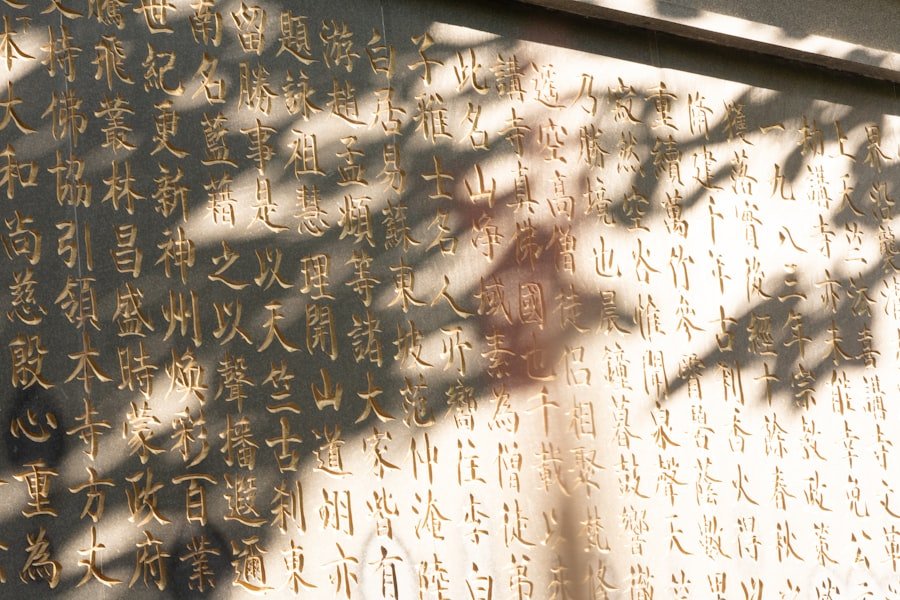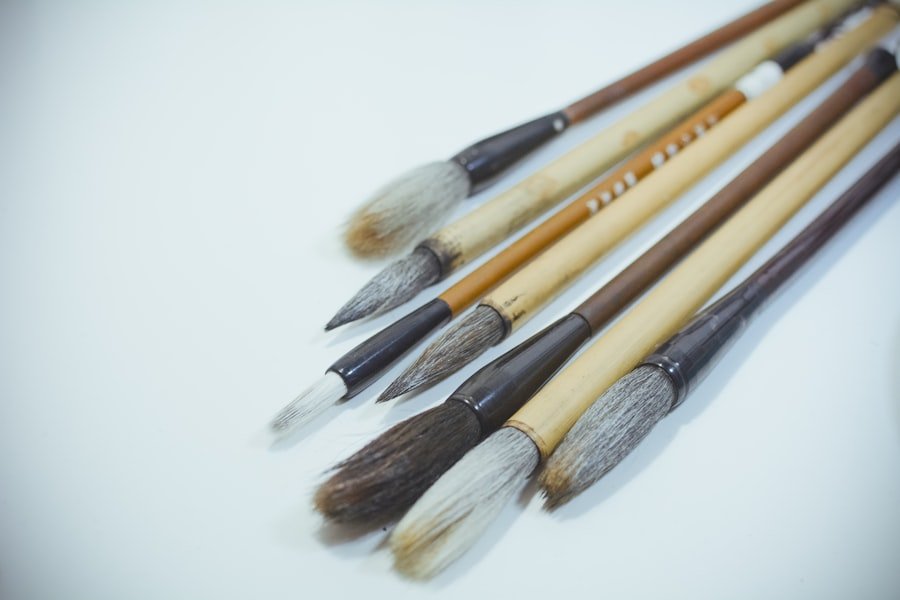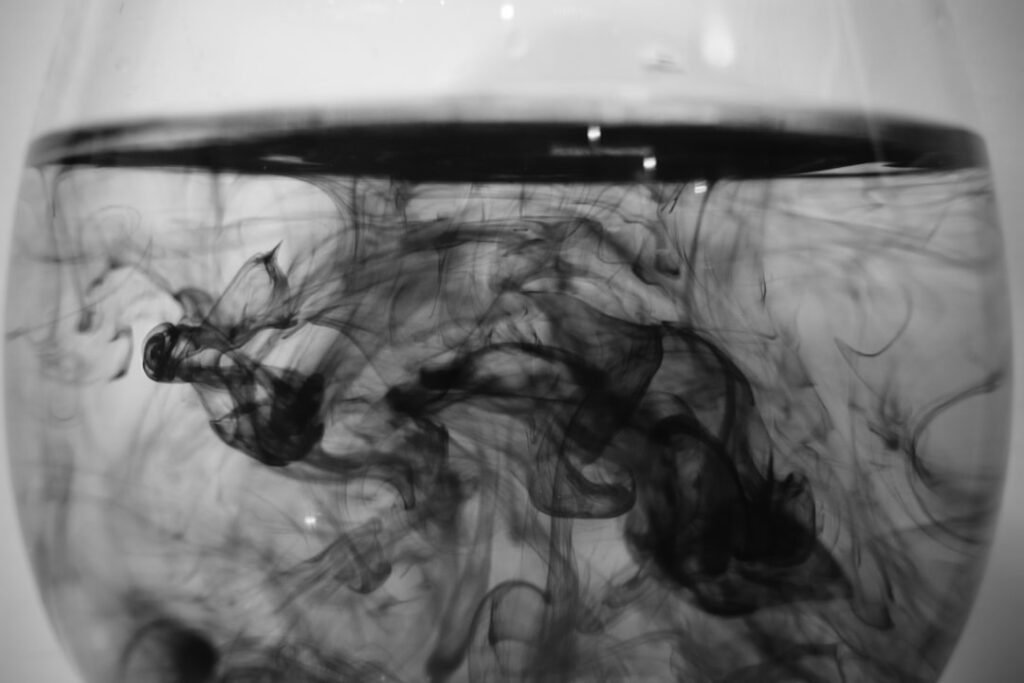The Chinese brush, a tool steeped in history and artistry, serves as a conduit for expression, allowing the artist to translate their emotions and thoughts onto paper. Unlike conventional brushes, the Chinese brush is designed with a soft, flexible tip that can create a myriad of strokes, from delicate lines to bold sweeps. This unique construction invites the artist to engage in a dance of rhythm and flow, where each stroke is a reflection of their inner state.
The rhythmic flow of the brush is not merely a technique; it is an embodiment of the artist’s spirit, a dialogue between the hand and the heart. As one begins to explore the world of Chinese brush painting, it becomes evident that the brush is not just an instrument but an extension of oneself. The way it glides across the paper, the pressure applied, and the speed at which it moves all contribute to a visual symphony.
This rhythmic flow is akin to music; it has its own tempo and cadence, inviting the artist to lose themselves in the moment. The beauty of this art form lies in its ability to capture fleeting emotions and thoughts, transforming them into tangible forms that resonate with viewers on a profound level. Master the art of Chinese calligraphy. Enroll now at the LC Chinese School in Oslo.
Table of Contents
ToggleSummary
- The Chinese Brush painting is characterized by its rhythmic flow, which is achieved through a balance of speed and pauses.
- Speed and pauses play a crucial role in Chinese Brush painting, allowing the artist to create dynamic and harmonious brushwork.
- Techniques for finding your flow with speed in Chinese Brush painting involve understanding the traditional rhythmic patterns and harnessing the power of breath and movement.
- Harnessing the power of pauses is essential for enhancing the rhythm of your brushstrokes, creating a sense of fluidity and balance in the painting.
- Embracing imperfection and spontaneity, as well as cultivating mindfulness and presence, are key to enhancing the rhythm of your Chinese Brush painting and experiencing its therapeutic and meditative benefits.
Understanding the Importance of Speed and Pauses in Chinese Brush Painting
In the realm of Chinese brush painting, speed and pauses are not merely technical considerations; they are essential elements that shape the overall composition. Speed can convey energy and dynamism, while pauses introduce moments of contemplation and stillness. The interplay between these two aspects creates a rhythm that breathes life into the artwork.
An artist who masters this balance can evoke a range of emotions, from tranquillity to exuberance, through their brushwork. The significance of speed in brush painting cannot be overstated. A swift stroke can suggest movement and vitality, capturing the essence of a fleeting moment.
Conversely, a deliberate pause allows for reflection, inviting viewers to engage with the piece on a deeper level. This duality is what makes Chinese brush painting so captivating; it encourages both the artist and the observer to experience a journey through time and space. Understanding how to manipulate speed and pauses is crucial for any artist seeking to create compelling works that resonate with their audience.
Techniques for Finding Your Flow with Speed in Chinese Brush Painting

Finding one’s flow with speed in Chinese brush painting requires practice and an understanding of one’s own rhythm. One effective technique is to begin with warm-up exercises that focus on quick, fluid strokes. These exercises help to loosen the wrist and arm, allowing for greater freedom of movement.
As artists become more comfortable with their brush, they can experiment with varying speeds, learning how each change affects the outcome of their strokes. Another technique involves listening to music that resonates with the desired pace of the painting session. Music can serve as an external guide, helping artists to synchronise their movements with the rhythm of the sound.
By allowing the music to influence their brushwork, artists can tap into a natural flow that enhances their speed and creativity. This approach not only fosters a sense of enjoyment but also encourages spontaneity, allowing for unexpected moments of brilliance to emerge on the canvas.
Harnessing the Power of Pauses to Enhance the Rhythm of Your Brushstrokes
While speed is vital in creating dynamic brushwork, pauses play an equally important role in enhancing rhythm. Pausing between strokes allows artists to assess their work, contemplate their next move, and breathe deeply. This moment of stillness can be transformative; it provides an opportunity to connect with one’s inner self and reflect on the emotions being expressed through art.
To harness the power of pauses effectively, artists can incorporate mindfulness practices into their painting routine. By focusing on their breath and being present in the moment, they can cultivate a deeper awareness of their movements and intentions. This heightened state of consciousness allows for more intentional pauses that enrich the overall composition.
When executed thoughtfully, these pauses can create a sense of balance and harmony within the artwork, drawing viewers in and inviting them to explore its depths.
Exploring the Traditional Rhythmic Patterns in Chinese Brush Painting
Traditional Chinese brush painting is rich with rhythmic patterns that have been developed over centuries. These patterns often reflect natural elements such as water, mountains, and flora, each embodying its own unique rhythm. Artists who study these traditional forms gain insight into how rhythm can be used to convey meaning and emotion within their work.
One notable pattern is the “four treasures” technique, which involves using specific strokes to represent different elements in nature. Each stroke has its own rhythm and flow, contributing to the overall harmony of the piece. By understanding these traditional patterns, artists can learn how to incorporate them into their own work while also infusing their personal style.
This exploration not only deepens their appreciation for the art form but also enhances their ability to create rhythmic compositions that resonate with viewers.
The Role of Breath and Movement in Achieving Fluidity with the Chinese Brush

Breath and movement are integral components in achieving fluidity when working with the Chinese brush. The act of painting becomes a meditative practice when artists synchronise their breath with their brushstrokes. Inhale deeply before making a stroke, allowing energy to build up within; exhale as you release that energy onto the paper.
This connection between breath and movement fosters a sense of calmness and focus, enabling artists to enter a state of flow where creativity flourishes. Moreover, understanding how movement affects brushwork is essential for achieving fluidity. Artists should pay attention to their posture and body alignment while painting; a relaxed stance allows for greater freedom of movement.
Engaging the whole body rather than just the wrist can lead to more expressive strokes that embody both grace and power. By cultivating this awareness of breath and movement, artists can enhance their ability to create fluid compositions that capture the essence of their artistic vision.
Balancing Speed and Pauses to Create Harmonious and Dynamic Brushwork
The true artistry in Chinese brush painting lies in balancing speed and pauses to create harmonious yet dynamic compositions. This balance requires practice and an intuitive understanding of when to accelerate or decelerate one’s movements. Artists must learn to listen to their instincts; sometimes, a rapid stroke may be followed by an extended pause that allows for reflection on what has just been created.
To achieve this balance effectively, artists can experiment with different approaches during their practice sessions. They might set specific time limits for certain strokes or allow themselves moments of spontaneity where they paint without overthinking. This experimentation encourages flexibility in their technique and helps them discover new ways to express rhythm through their brushwork.
Ultimately, finding this equilibrium between speed and pauses leads to artworks that are not only visually striking but also emotionally resonant.
Cultivating Mindfulness and Presence to Enhance the Rhythm of Your Painting
Mindfulness plays a crucial role in enhancing the rhythm of one’s painting practice. By cultivating presence during each session, artists can immerse themselves fully in the creative process without distractions or self-doubt. This state of mindfulness allows for greater connection with both the brush and the canvas, enabling artists to respond intuitively to their impulses.
Practising mindfulness techniques such as meditation or focused breathing before painting can help set a positive tone for each session. Artists may also find it beneficial to create a dedicated space for their practice—one that is free from interruptions—where they can fully engage with their art. By fostering this environment of presence and awareness, artists can unlock new levels of creativity while enhancing the rhythmic quality of their brushwork.
Embracing Imperfection and Spontaneity in Chinese Brush Painting
In Chinese brush painting, embracing imperfection is essential for fostering creativity and spontaneity. The beauty of this art form lies in its inherent unpredictability; no two strokes are ever identical, nor should they be. Artists are encouraged to let go of perfectionism and allow themselves to make mistakes or deviate from their original plans.
These moments often lead to unexpected discoveries that enrich their work. Spontaneity can be cultivated by allowing oneself to paint freely without overthinking each stroke or worrying about the final outcome. This approach encourages artists to trust their instincts and embrace whatever emerges on the canvas.
By celebrating imperfections as part of the creative journey, artists can develop a more authentic style that reflects their unique voice while enhancing the overall rhythm of their work.
The Therapeutic and Meditative Benefits of Finding Your Flow with the Chinese Brush
Finding one’s flow with the Chinese brush offers numerous therapeutic benefits that extend beyond artistic expression. Engaging in this meditative practice allows individuals to experience moments of tranquillity amidst life’s chaos. The rhythmic motion of painting can induce a state of relaxation similar to mindfulness meditation, helping reduce stress levels while promoting mental clarity.
Moreover, immersing oneself in this art form fosters self-discovery and personal growth. As artists navigate through challenges—be it mastering techniques or overcoming creative blocks—they develop resilience and confidence in their abilities. This journey towards finding flow not only enhances artistic skills but also nurtures emotional well-being by providing an outlet for self-expression.
Embracing the Rhythm of the Chinese Brush as a Path to Creative Expression
In conclusion, embracing the rhythm of the Chinese brush opens up a world of creative expression that transcends mere technique. It invites artists into a realm where speed and pauses coexist harmoniously, allowing for dynamic compositions that resonate deeply with viewers. Through mindful practice, individuals can cultivate fluidity in their movements while celebrating imperfections as part of their artistic journey.
For those eager to delve deeper into this captivating art form, LC Chinese School in Oslo offers exceptional courses in Chinese calligraphy that focus on mastering these principles. With experienced instructors guiding students through techniques that emphasise rhythm, speed, pauses, and mindfulness, participants will find themselves immersed in an enriching learning experience that nurtures both skill development and personal growth. Embrace this opportunity at LC Chinese School—where every stroke becomes a step towards discovering your unique artistic voice through the enchanting rhythm of the Chinese brush.
Master the art of Chinese calligraphy. Enroll now at the LC Chinese School in Oslo.







